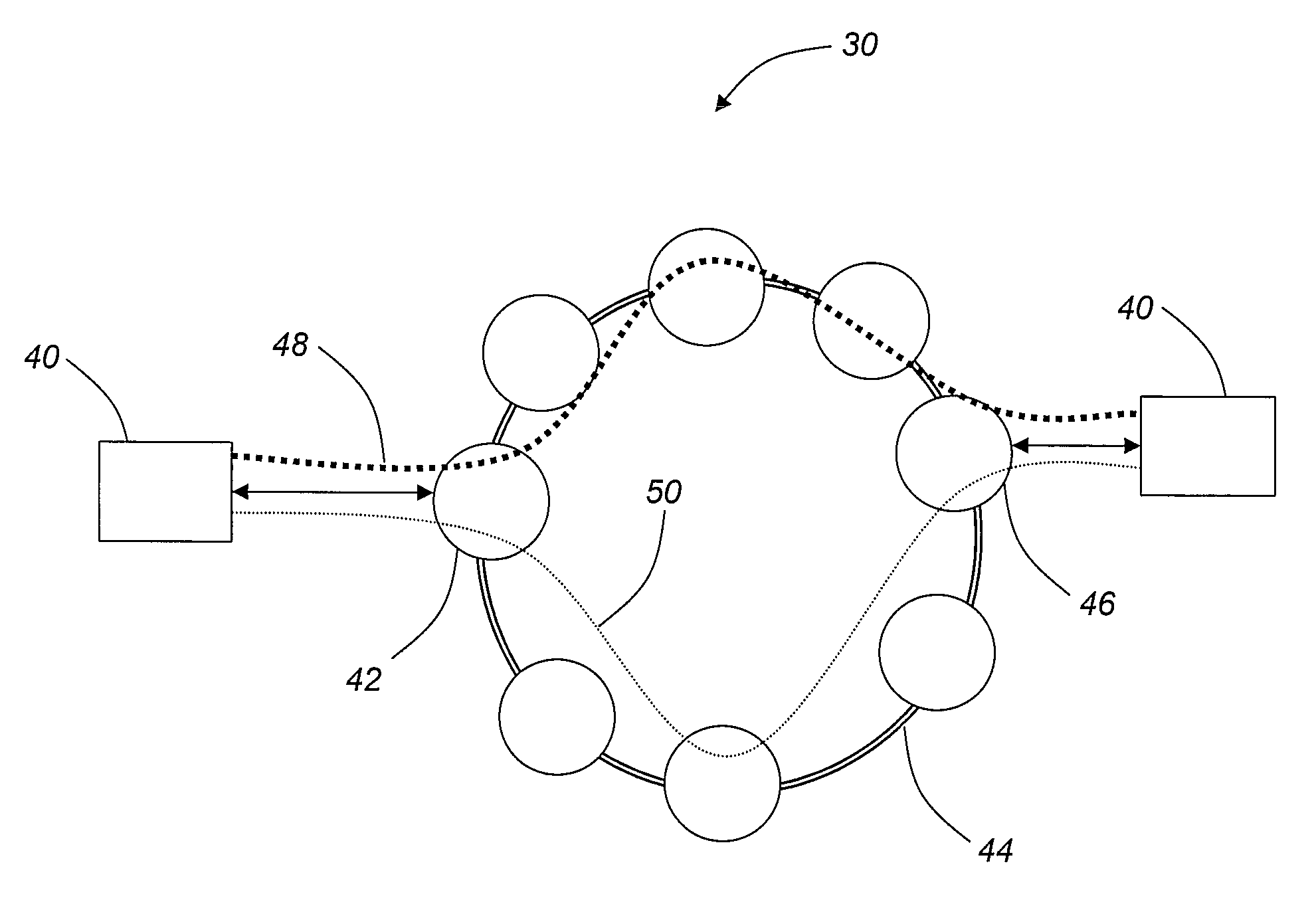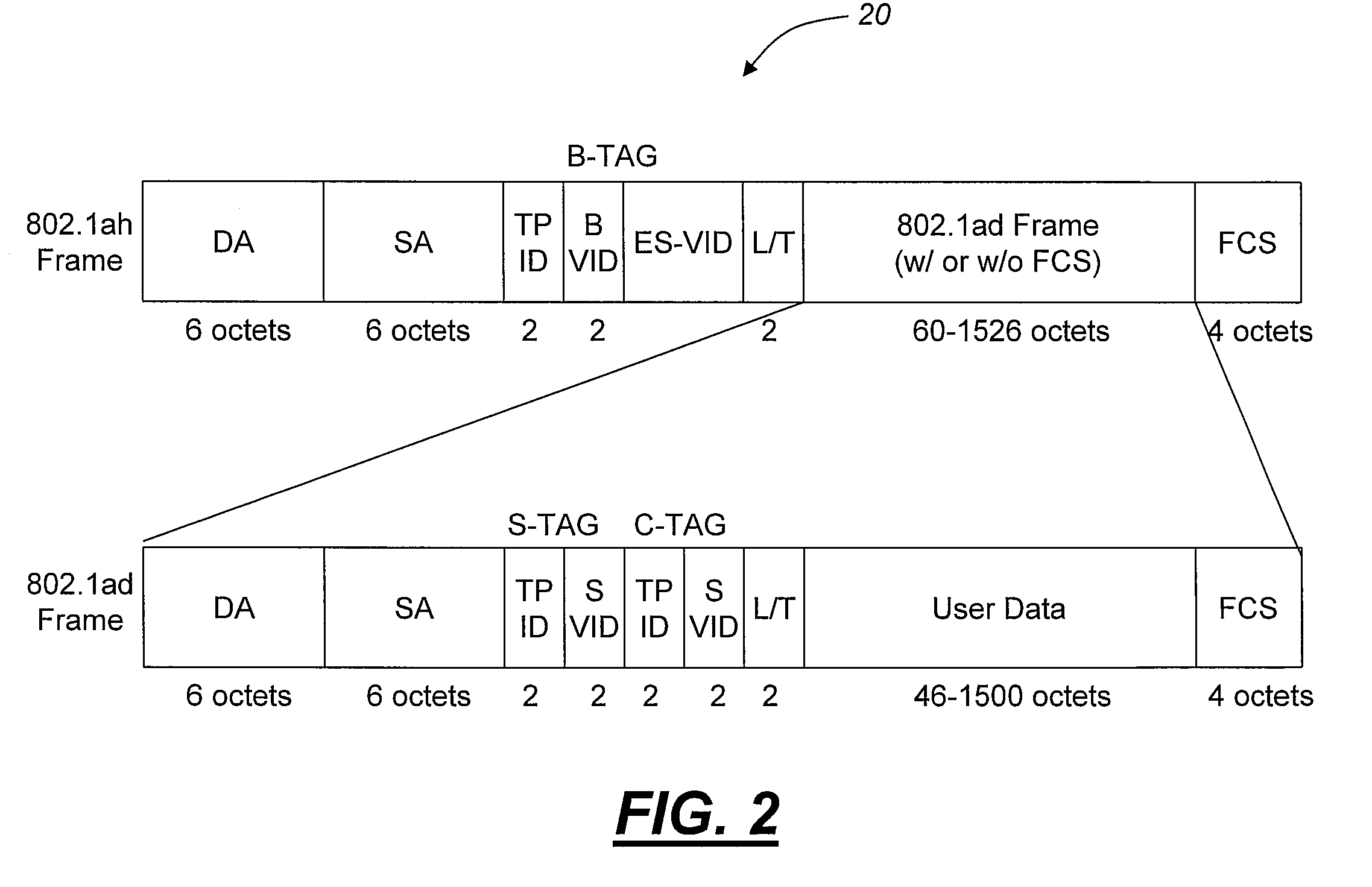Systems and methods for a self-healing carrier ethernet topology
a carrier ethernet and topology technology, applied in the field of data communication networks, can solve the problems of lack of network protection, insufficient ethernet for carrier transport applications, and typically unprotected networks
- Summary
- Abstract
- Description
- Claims
- Application Information
AI Technical Summary
Benefits of technology
Problems solved by technology
Method used
Image
Examples
Embodiment Construction
[0021]In various exemplary embodiments, the present invention provides systems and methods for self-healing Ethernet topologies. Interconnected nodes are configured with a primary and secondary path which is determined by VLANs, MPLS label, PBB-TE VID, FR, ATM VC, and the like. One or more head-end nodes are designated for terminating each path, such as a VLAN, and for performing cross-connects between the primary and secondary paths.
[0022]IEEE 802.1ag Continuity Check Messages (CCM) are transmitted by all nodes on both the primary and secondary routes. The self-healing Ethernet topology is constrained physically or logically to one of a ring or linear chain system. Accordingly, multicast CCM messages are configured to naturally traverse the physical or logical topology. Responsive to a loss of a predetermined number of CCM messages and a subsequent CCM message with an RDI flag, traffic is switched by each interconnected node to the secondary route.
[0023]Advantageously, the present ...
PUM
 Login to View More
Login to View More Abstract
Description
Claims
Application Information
 Login to View More
Login to View More - R&D
- Intellectual Property
- Life Sciences
- Materials
- Tech Scout
- Unparalleled Data Quality
- Higher Quality Content
- 60% Fewer Hallucinations
Browse by: Latest US Patents, China's latest patents, Technical Efficacy Thesaurus, Application Domain, Technology Topic, Popular Technical Reports.
© 2025 PatSnap. All rights reserved.Legal|Privacy policy|Modern Slavery Act Transparency Statement|Sitemap|About US| Contact US: help@patsnap.com



